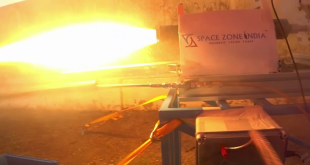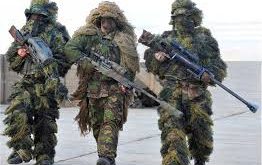Indian Railway is the largest rail network in the world after the US, China, and Russia. It is enormous with a total track length of 1,14,907 km. More than 2,1648 trains, carry over 22 million passengers and 3.32 million tonnes of freight every day. It requires substantial investment in high-quality tracks and maintenance. With recent accidents, we have witnessed one of the enduring problems faced by the Indian railways is the corrosion of Rail tracks as India has a long coastline. The open toilets in the trains along with animal and bird faeces add to the problem of Railway track corrosion. The ideal life of railway tracks should be 12 years but because of corrosion issues, rail tracks need to be replaced every two years, according to railway officials.
Galvanized steel’s corrosion resistance and durability result in reduced maintenance needs for rail tracks. The protective zinc coating acts as a long-term shield against corrosion, reducing the frequency of repairs and maintenance. This saves both time and resources for railway authorities, allowing them to focus on other critical maintenance tasks. Zinc has been used in the galvanization process for railway tracks to extend their lifespan. Galvanization involves coating iron or steel with a layer of zinc to protect it from corrosion.
Railway tracks are constantly exposed to harsh environmental conditions, such as moisture, varying temperatures, and physical wear from passing trains. This exposure can lead to rust and corrosion, weakening the tracks and reducing their lifespan.
By galvanizing the tracks with a layer of zinc, a protective barrier is created that prevents corrosion. Zinc is highly resistant to rust and oxidation, so when it covers the surface of the tracks, it shields the underlying iron or steel from environmental elements. This significantly slows down the process of corrosion, effectively doubling the lifespan of the railway tracks compared to non-galvanized tracks.
The zinc coating acts as a sacrificial layer, meaning that if the surface gets scratched or damaged, the zinc will corrode before the underlying metal does, providing continued protection to the tracks. This process helps maintain the structural integrity of the tracks over a longer period, reducing maintenance needs and costs while ensuring safer and more durable railway infrastructure.
Due to corrosion, the railways incurs huge losses annually. Also, corrosion poses a threat to passenger safety and impacts daily travel since a train’s speed is reduced. This also affects the efficiency., In a bid to strengthen safety and performance, mainly in the corrosion-prone coastal regions, the Railway Board has given the go-ahead for using zinc-coated rails. Indian Railway needs to invest in high-quality tracks made of galvanised steel and regular maintenance to help prevent accidents and ensure the safe movement of trains. Well-maintained tracks minimize the risk of derailments, reducing the potential for injuries and loss of life among passengers and railway staff.
Due to its special qualities and corrosion resistance, galvanised steel can prolong the life of train rails. Zinc serves as a barrier against corrosion and is applied as a coating on galvanised steel. Rail tracks are subject to a variety of environmental factors, including moisture, rain, and chemicals, which can cause rust and corrosion. Galvanised steel has a strong corrosion resistance because of the zinc coating, which also keeps off the rust from forming over steel and increases the lifespan of the rails. It is renowned for its resilience in the face of hardship.
Train weight and movement, dramatic temperature changes, and high loads all put constant strain on rail lines. Galvanised steel’s durability enables it to endure these circumstances, preventing damage to the rails and lengthening its lifespan. Rail tracks made of galvanised steel have the potential to save a lot of money over time. Reduced replacement costs and maintenance costs are the outcome of the longer lifespan and fewer maintenance requirements. Due to its durability, galvanised steel eventually proves to be a more affordable option for railway infrastructure.
Investing in high-quality tracks ensures smooth and uninterrupted movement of trains, facilitating trade, commerce, and overall connectivity. While the initial investment in high-quality tracks and maintenance may be significant, it often leads to long-term cost savings. Regular maintenance helps identify and address issues at an early stage, preventing the need for more extensive repairs or replacements in the future.
Moreover, efficient tracks reduce energy consumption, wear and tear on rolling stock, and maintenance costs associated with frequent repairs. Indian Railways is in the process of introducing semi-high-speed trains like Vande Bharat which needs a robust track system. Maintenance free Railway tracks are ideal for high-speed trains. It can also help reduce carbon emissions and alleviate road congestion. By investing in high-quality tracks and maintenance, the Indian Railways can promote sustainable transportation options, which align with environmental goals and contribute to a greener future.
By Rahul Sharma, Director of the International Zinc Association
 Newspatrolling.com News cum Content Syndication Portal Online
Newspatrolling.com News cum Content Syndication Portal Online






